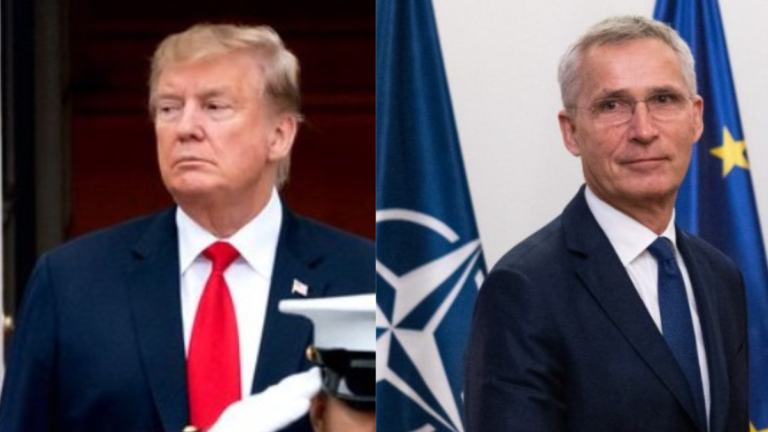Seventy-five years since its inception, the Atlantic Alliance confronts a remarkable array of obstacles in the present day. Notably, the adversarial stance taken by former United States President, Donald Trump, towards NATO emerges as a prominent challenge. Thus sparking a cascade of responses and debates within and beyond the Alliance’s borders.
Yet, comprehending the intricacies of this scenario mandates an exploration not solely of Trump’s conduct and declarations. But also of the historical, political, and economic backdrop that has influenced transatlantic relations and the development of NATO over time.
Table of Contents
Trump’s hostility towards NATO
Trump’s hostility towards NATO did not suddenly emerge during his presidential term, but has roots that go back to the past. Since the beginning of his election campaign, Trump has taken a critical approach towards the Alliance, calling it “obsolete” and raising doubts about the United States’ willingness to continue ensuring the security of its European allies.
These positions have created a climate of uncertainty and tension within the Alliance, calling into question its future and the role of the United States as its main supporter and guarantor of security.
Throughout his tenure as president, Trump persistently cast doubt on the United States’ resolve and dedication to its transatlantic partners. His criticisms regarding member states’ financial contributions and his incendiary language have exacerbated rifts and strains within the Alliance, heightening apprehensions about its unity and efficacy in deterring potential hazards to European and transatlantic stability.
The reactions to Trump’s declarations
Trump’s statements have provoked mixed reactions from European leaders over time, with French President Emmanuel Macron seeking to downplay tensions in 2018, arguing that Trump never openly threatened to abandon NATO.
However, other European voices interpreted his words as a clear threat, highlighting the divisions within the Alliance regarding the management of transatlantic relations.
In particular, the accusation leveled before the war in Ukraine against Germany for its dependence on Russian gas via the Nord Stream 2 pipeline added a further element of controversy to the situation. While some European leaders have accepted Trump’s criticism of defense spending, others have defended their position, highlighting progress made towards agreed goals.
Germany’s position, in particular, has been the subject of debate, with some observers underlining the need for a greater financial commitment from Europe’s richest country to ensure the collective security of NATO members.
NATO and the US
Although Trump raised the debate on NATO spending in particularly bombastic tones, he was not the first American president to do so. Both Barack Obama and George W. Bush pressured allies to increase their military spending to 2 percent of GDP, reflecting a persistent concern in the United States about burden-sharing within the Alliance.
Furthermore, Trump’s recent statements that he encouraged Russia to invade non-compliant NATO member states represent a clear departure from traditional US policy towards the Alliance.
These observations have raised concerns about the stability and reliability of the United States as a key ally of NATO members, calling into question the strength of the transatlantic relationship and NATO’s own effectiveness as a deterrent against potential threats to the collective security of its members.
Moreover, these tensions have escalated worries regarding the security and stability of Europe and the North Atlantic, carrying potential ramifications for global security, as well as international economic and political equilibrium.
Ambiguity and political upheaval can erode investor confidence and destabilize financial markets, jeopardizing economic growth and the social welfare of citizens across member nations.
The challenges for the future of the Atlantic Alliance
In conclusion, Trump’s hostility towards NATO represents one of the most significant challenges for the Atlantic Alliance and for transatlantic relations as a whole.
The tensions between Trump and NATO reflect not only differences of opinion regarding military spending and sharing of burdens within the Alliance, but also deeper divergences regarding the strategic and geopolitical vision of the United States and its European allies.
The future of transatlantic relations and NATO remains uncertain and subject to constant renegotiation of international political, economic and strategic relationships. However, it is clear that resolving tensions will require not only renewed commitment from both sides, but also a cohesive and coordinated approach to managing global challenges and threats to collective security.
Read also: Russia and China lead the “other world”: new countries in the anti-NATO front












